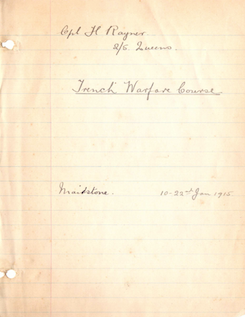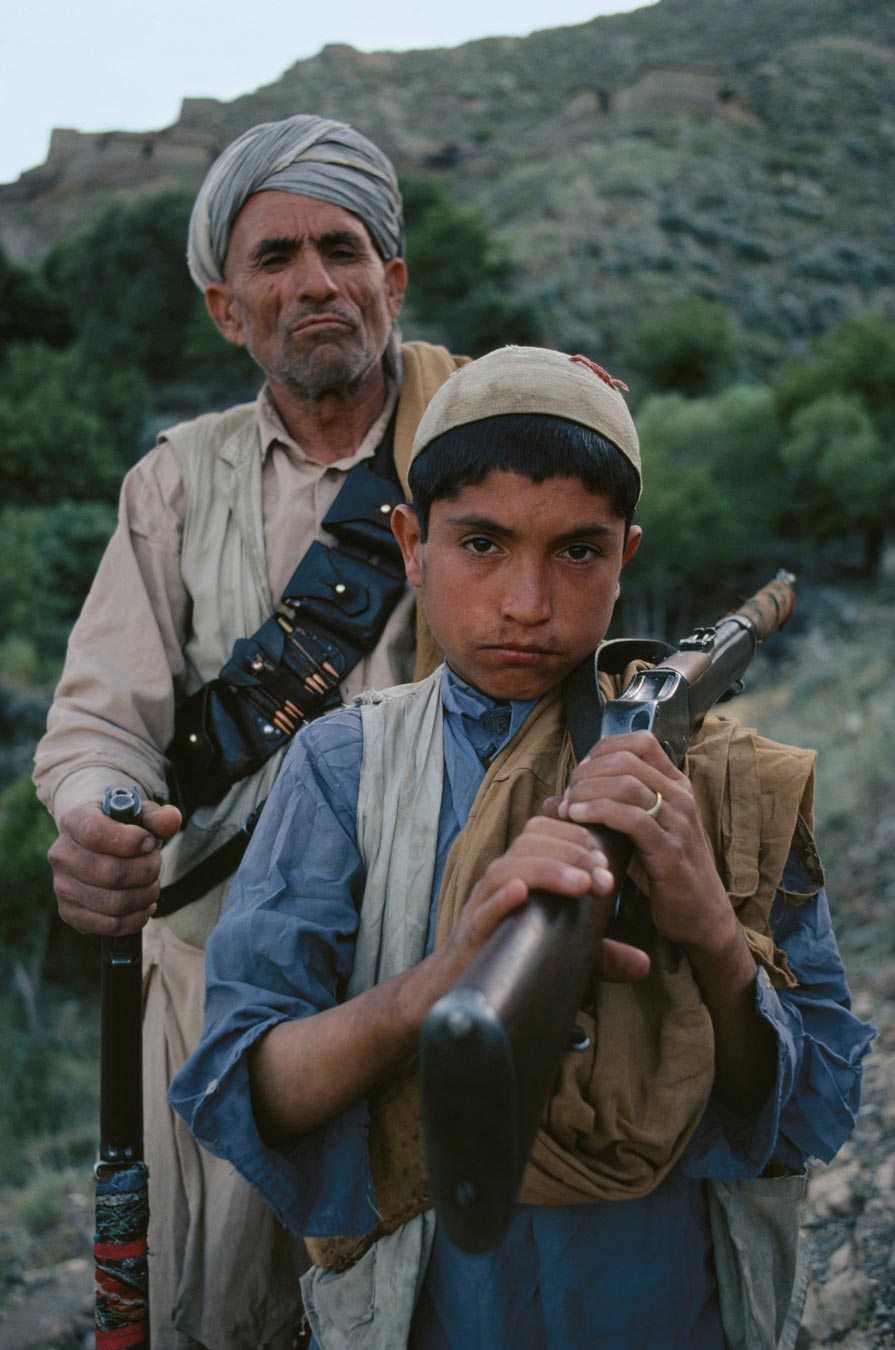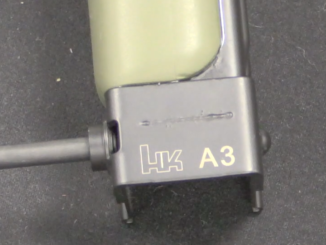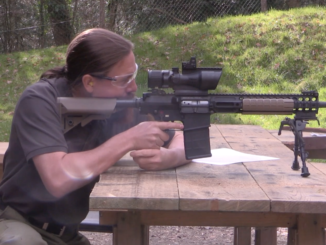I have a really neat document to share today, generously sent to me by a reader named Chris in the United Kingdom. These are the notes from a 1915 course on trench warfare as recorded by his grandfather, one Harold Rayner. Harold was born in 1885 in Surrey, and survived the war to live until 1973 (although his brother died on the Western Front). Corporal Rayner (of the 2/5 Queen’s) attended a training class on trench warfare from January 10th to the 22nd of 1915, to help prepare him for combat, and he took about 60 pages of handwritten notes on a variety of topics including:
- Fuses
- Detonators
- Service Grenades
- Trench Engines
- Barricades
- Trench Fighting
- Explosives
- the Stokes Gun
- Open Warfare
The notebook included several mimeographed diagrams of grenades, mortars, and other pieces of equipment. Several of those have faded quite badly, and I did my best to bring up the images in the scanned copy below. Apparently Chris offered this notebook to several museums, and none were interested. Well, I am happy to be able to scan it and make it public for anyone to see – thanks for thinking of me, Chris!
If you are interested in this aspect of World War One, take a look at the document – I think you will find lots of interesting details. And remember:






Thanks for sharing Ian, I for one have no idea why any Military history (or just history) museum would not want this.
Interesting stuff. Thanks.
Ian, dont you have raw files as they came from the scanner? I would give them a try in photoshop, to bring out more detail. I tried it with the pdf, but there they are already too bad to salvage any more. If you do send them to my email.
Huge Thank You to Chris for sharing this, and thank you Ian for scanning and hosting this.
My ex wife inherited a hard cover exercise book from her grandfather, who was a “musketry instructor” during The Great War. He’d lost a leg in the fighting and spent the rest of the conflict teaching soldiers how to fix faults with Lewis guns.
He’d recorded in wonderfully neat copperplate handwriting the multitude of ways the Lewis could malfunction and what to do about it when it did.
This is an astonishing piece of first hand history!!! I can’t believe the Imperial War Museum wouldn’t want this for their archives. Thanks for sharing!
Ian,
Many thanks to you and Chris for sharing!!! Would Chris be interested in seeing if the U.S. Army Ordnance Museum would like to have the materials? If so, let me know and I’ll approach them.
Larry
He would not, because he sent the physical notebook to me and now I have it. 🙂
And a century from now it will be auctioned off as part of the Ian McCollum Collection, one of the most extensive sets of valuable Minutiae Militaria the world has ever seen.
Interesting document.
Reminds of of how officers qualifying to become what are now known as Ammunition Technical Officers had to,pre WW1 and at least for some part of it, write down all there course notes and drawings themselves. These would then be graded as part of the final qualifications of the course.
If he’d got through to me I would certainly have recommended that our archive accept it. Still, it’s in good hands.
What an incredible historical document. I also can’t believe the IWM didn’t grab this.
Wow. That’s an impressive piece of documentation. Much more “real” history being hand written rather than being a gov’t document.
Thanks for sharing Chris. Lots of neat photos, notes and letters out there in family collections that the world has never seen.
Hi Ian,
Having worked at a regimental museum, I’m astounded an institution would pass up on this nice little vignette of the type of instructional courses undertaken by troops in preparation for trench warfare. But hey ho, it’s a mad and sad world in military museums at the moment, especially those subsidised by local authorities (look at the sad story of the Durham Light Infantry Museum).
I don’t know what information you already have about Corporal Harold Rayner of the 2/5th Battalion (T.F.), The Queen’s (Royal West Surrey) Regiment, but he ended the war as a Sergeant, serving with the 10th (Service) Battalion (Battersea), The Queen’s (Royal West Surrey) Regiment. Unfortunately, although his service record no longer survives (courtesy of the Luftwaffe in 1940, who destroyed 60% of WW1 service records), from the medal rolls, we see that he first proceeded overseas to the 10th Bn already as a Sergeant, with the service number T/241192. Because of this, we can surmise that he first disembarked in a Theatre of War (in this case France & Flanders) sometime after March 1917, when the renumbering of the Territorial Force took effect.
This renumbering replaced the old system (whereby each Territorial Force infantry battalion had had its own number series), with new six-digit numbers, from sequential ‘blocks’ allocated to each T.F. battalion of each infantry regiment. Sergeant Rayner’s number (the ‘T’ prefix simply stands for ‘Territorial’) is within the block allocated to the 5th Battalion (T.F.) of the West Surrey’s. What is interesting about Corporal Rayner’s attendance at this course (Maidstone , in Kent, was the location of the Army’s School of Trench Warfare) is the fact that he’s serving with the 2/5th Battalion of the West Surrey’s. Since its establishment in 1908, the role of the Territorial Force in wartime had been envisaged as being primarily ‘Home Defence’, with a secondary function, if needed, of relieving regular infantry battalions on Imperial garrison duty. However, as the statutory obligation of the part-time volunteers of the T.F. was only to serve within the United Kingdom when embodied, service overseas was purely voluntary. Come 1914, and the overwhelming need for formed T.F. units to take the field (first in the Empire, and then on active service in Europe), the decision was made, in those T.F. units where more than 60% of troops had taken the ‘Imperial Service Obligation’, to split the men into a 1st Line or ‘Foreign Service’ unit, and into a 2nd Line or ‘Home Service’ cadre, the latter manned by Territorials who had not agreed to serve overseas: for both 1st and 2nd Line, the numbers were soon swelled by wartime recruitment (until the introduction of conscription in 1916, a man could still join the Territorial Force, and, because it was wartime, be on full-time active service, yet still choose ‘Home Service’ only). Thus the 1/5th West Surrey’s were first sent to India, then saw action in Mesopotamia, while the 2/5th remained in the United Kingdom.
So, given that Rayner was in the 2/5th, and didn’t go overseas till 1917 at the earliest, the likelihood is that he was a ‘Home Service’ man (although good N.C.O.s would always be retained for units at home when necessary, and 2nd Line units were used as a training reserve for the 1st Line, instructing new T.F. recruits wishing to serve overseas). By June 1915, the numbers of ‘Foreign Service’ volunteers in 2nd Line units of the T.F. became such that even these units became liable for overseas service (although the 2/5th West Surreys stayed in the U.K.), and the ‘Home Service’ men were transferred to new 3rd Line battalions.
In addition to the need for N.C.O.s of the 2nd Line like Rayner to keep abreast of the latest developments in trench warfare for training purposes, there was always a more prosaic need to know this information: the threat of German invasion (2nd Line Territorial units in the U.K., like their 1st Line counterparts overseas, were part of dedicated Territorial formations: thus in the U.K., the 2/5th West Surrey’s were initially a component unit of the 2nd Surrey Brigade, 2nd Home Counties Division, with divisional headquarters at Windsor). In any case, the introduction of conscription in 1916 removed any distinction between ‘Foreign Service’ or ‘Home Service’ men in the T.F. – all troops were now liable to serve overseas. In September 1917 all available men from the 2/5th West Surrey’s were posted as drafts to other units within the regiment, and it was probably around this time that Segeant Rayner arrived in France to serve with the Battersea Battalion, one of the West Surrey’s ‘Pals’ battalions.
For anyone interested in the type of training British Army Officers received for trench warfare and other aspects of field service, I’d recommend ‘Knowledge for War: Every Officer’s Handbook for the Front’, freely available at archive.org – it contains many of the diagrams which appear in Rayner’s notes.
Chris
Relating subject: this Monday (2days ago) I visited memorial of Canadian servicemen fallen in War in Europe:
http://ontariowarmemorials.blogspot.ca/2012/07/eugenia.html
It was dressed with wreaths.
It is in very nice natural location.
What an unbelievable gift from the past.
Great document, too bad the drawings didn’t come out clearly enough to make out. The one thing I didn’t see is a note about the Stokes mortar bombs not having fins and flying like a bowling pin in the air—end over end
As Jonathan mentioned, Royal Armouries in Leeds would have been an apt repository for the notes and would have kept it in the UK. One positive that Ian got it is that he will share it I have had a aimilar experience of museums not wanting gifts and donations notably serial numbers 2 & 3 AR15 prototype rifles were offered to the Smithsonium by Jacques Michault of SIDEM when they close up the UK offices, the Smithsonium declined the gift! They recently sold in the US for $125k each “go figure” !
So interesting. My grandfather was in France with the U.S. Army Engineer Corps. in WWI. He told an interesting story about the fickleness of fate,breezes and mustard gas. As he sat chatting with two fellows across the foxhole from him they suddenly fell over dead. He knew of no reason why. After examining the bodies they learned a vagrant breeze has brought mustard gas to their side of the foxhole leaving him untouched.
And so he came home and married my grandmother and poof we (his family)were allowed to exist.
It must have been hell with the mix of traditional warfare and development of more modern technology then. Horses, trenches, machine guns and toxic gas. Back then anything goes. He spoke of airplanes too. They fired at them with rifles and they were considered no real physical threat at that time. The old man lived until the 1980’s. He never spoke about those experiences unless I asked. I was one of many grandchildren. He had six sons and a daughter. I am the child of his youngest son.